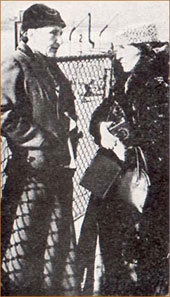August 31st, 2010 § § permalink
For those of you who have been following the adventures of the birth and arrival of my English Springer Spaniel Fritz since last November, I thought a short post would be appropriate as he passes the nine month old mark.
After his bath this past weekend, he surprised me with a most regal pose on one of our new sofas with its rose cushion, so how could I not feature him this week?!
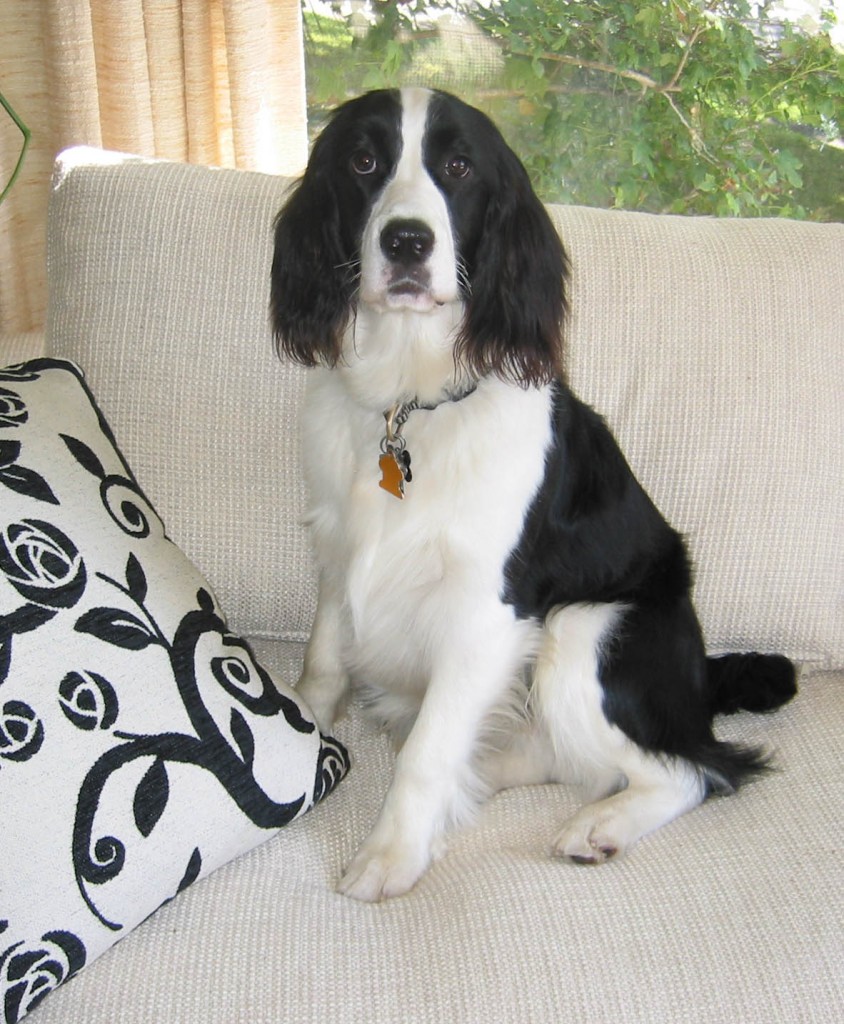
By chance I also received an e mail and photo from a friend who had spent her vacation in a home on Lake Tahoe. On the wall of one of the rooms was a framed California license plate with “Mr Fritz” on it. She thought of me and thought of Fritz.
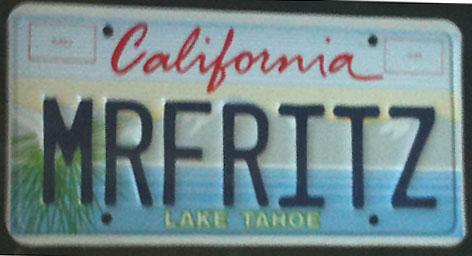
And then there was another dog who often posed regally both for photographs and portraits and thoroughly enjoyed the attention:
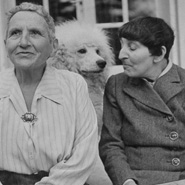
“Basket was a white poodle. When I first came to Paris everybody every concierge had a poodle as they later had a fox terrier, then Alsatian police dogs came and then wire haired terriers and then we had a white poodle and we named him Basket. The French children and the French men and women would all stop and look at him, they said each one as if it was a new idea one would think he was a lamb.
One day, Basket had just had just been washed, a little boy came along and said, one would call it a marriage he is so white…”
from EVERYBODY’S AUTOBIOGRAPHY, Gertrude Stein
Mr. Fritz and Baskets I & II holding court in special places in everybody’s autobiography.

August 23rd, 2010 § § permalink
Seventy-three years ago tomorrow, an obituary appeared in the San Francisco Chronicle. But first:
All families, I assume, have skeletons in their closets. Often these bones are fleshed out by stories that have become embellished over the years of a relative who did this or that and forever became the black sheep of the family – as if most families are all lambs from a pure, white flock!
Biographers of well-known people relish unearthing these skeletons to get all the facts that are (usually) fit to print. This juicy information helps to sell books as reviewers often highlight these tidbits. (The recent Kitty Kelley biography of Oprah comes to mind.)
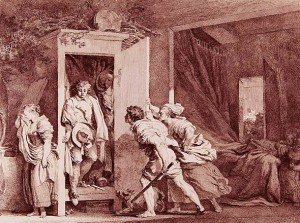
The Armoire, 1778
In the case of GertrudeandAlice, there were skeletons in their closets and I don’t mean the fact that they were lesbians and never really “came-out” of the armoire. (Their close friends knew the score and many of Gertrude’s writings give plenty of hints about the relationship between her and her “secretary/companion.”)
Gertrude had three brothers and a sister, but one usually only hears about two of the brothers, Michael, the eldest and Leo, who was two years older than she was. Michael had been responsible for selling the family’s share in the street car business in San Francisco after their father’s death, giving the Steins enough money to live comfortably for almost fifty years. And both Michael and Leo along with Gertrude were responsible for amassing the famous Stein family collection of major artists of the early 20th century.
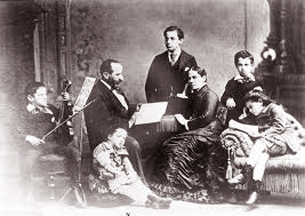
The Steins circa 1881:( l to rt) Simon, Gertrude, Father,Michael,Mother,Leo and Bertha
It was the two other siblings, Bertha and Simon, who have been relegated to skeletons-in-the-closet status, though as far as I know neither did anything horrendous including bad-mouthing any of their more well-known kin, so maybe it would be fairer to call them “tibias or fibulas in the closet.”
Maybe Gertrude should take the heat for estranging this sister and brother. She referred to both of them as “simple-minded” in her book EVERYBODY’S AUTOBIOGRAPHY – not exactly the kind of sentiment that brings families together. Simon did have a simple life, first working as a brakeman on the San Francisco cable cars (he had to retire from that job when he gained too much weight and later ran the stationery and cigar concession in an Italian grocery store. Bertha lived in Baltimore, married, raised a family and had no contact with her brothers and sister. Gertrude,however, wrote word portraits of two of her sons, Daniel and Arthur.
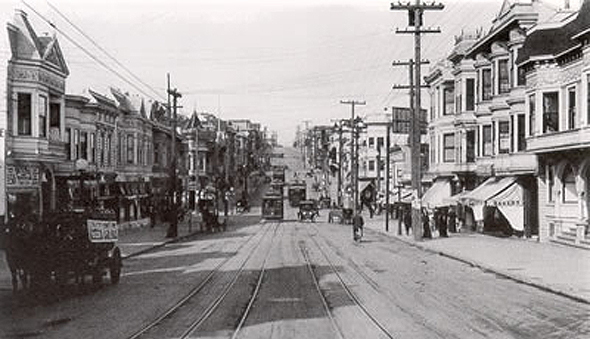
Simon may have put the brakes on along this route on San Francisco's Castro Street
But then we come to Alice.
» Read the rest of this entry «
August 11th, 2010 § § permalink
The newest edition of THE ALICE B. TOKLAS COOK BOOK (Harper Perennial, 2010) came out yesterday published by the paperback division of its original 1954 publisher then called Harper & Sons. (The title of the book maintains the original spelling of “cookbook” as two words.) This book is a reprint of the original, but includes a foreword written by food writer M.F.K. Fisher for the thirtieth anniversary edition. Fisher regrets that she never met Alice, though she had several chances while living in Paris.
By the end of the first week that this edition was released, it was within the top fifty French cookbooks on amazon.com. Not bad!
In the fifty six years since it first came out, the cookbook has only been out of print for a very short time and has been widely translated, most recently into Norwegian and became a bestseller in Scandinavia.
The continuing popularity of the cookbook is largely due to the “Haschish Fudge” recipe, page 259 of the latest edition, which though really more of a spicy, nut candy than a fudge, morphed into “Alice B. Toklas Brownies” in the 1960s. (See Ruth Reichl note below.) The cookbook is, however, more than just this notorious recipe, and the story of how it came about and has endured all of these years is in itself blogworthy.
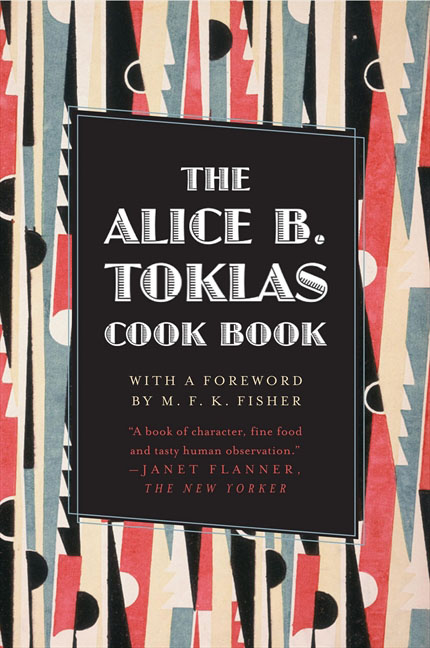
The latest edition with a cover blurb by friend Janet Flanner.
» Read the rest of this entry «








